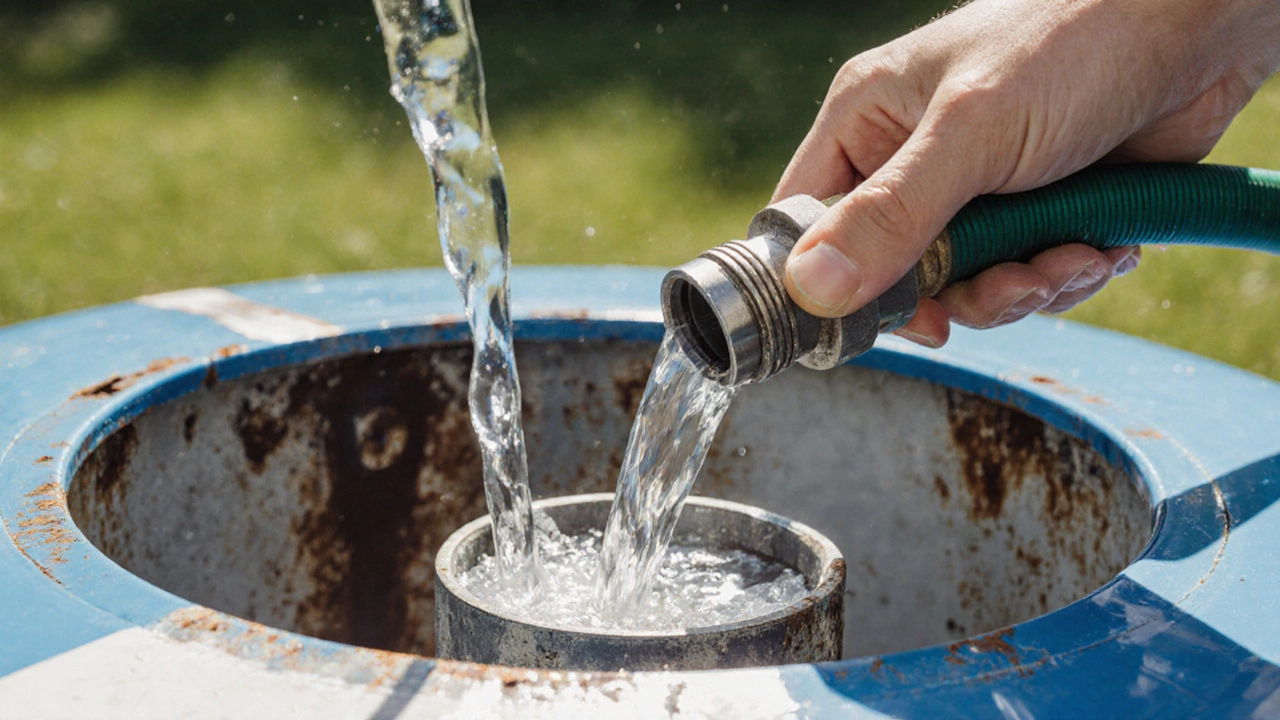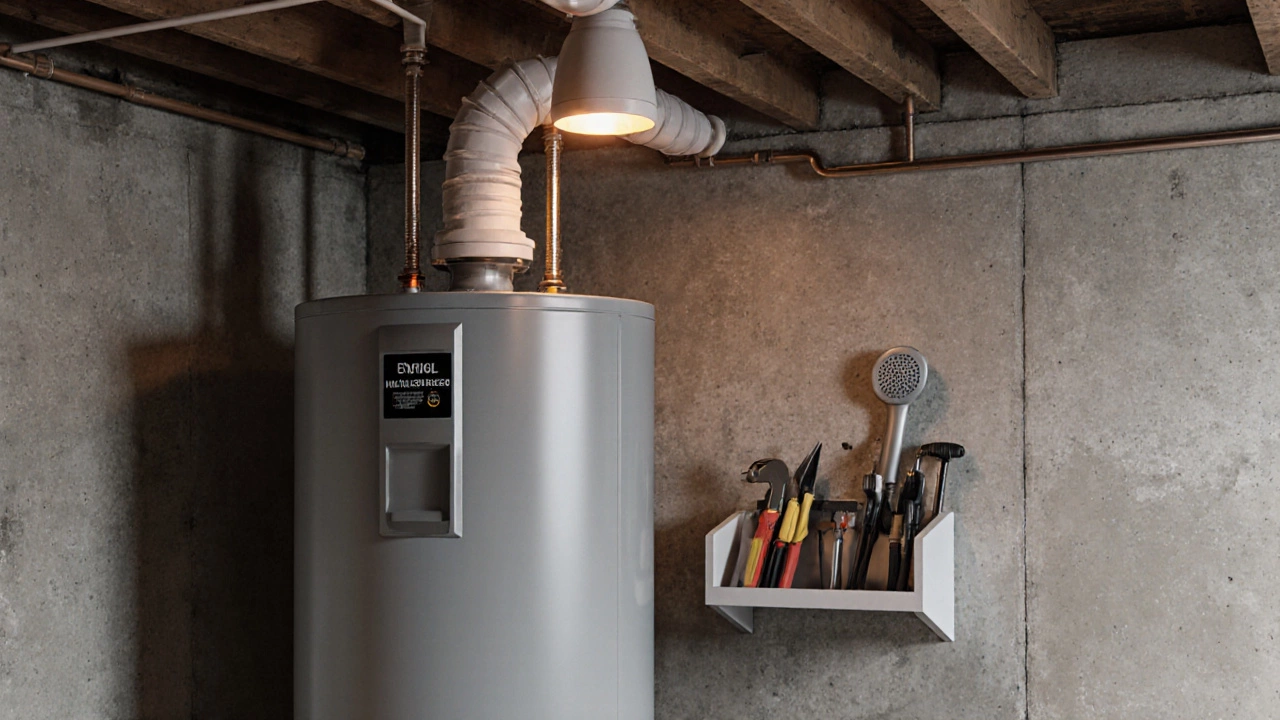Water heater is a household appliance that heats water for domestic use, typically using electricity or gas. Its primary purpose is to supply hot water on demand for showers, dishwashing, and heating systems. Knowing the typical water heater lifespan helps homeowners plan maintenance and budget for eventual replacement.
Key Takeaways
- Average life expectancy: 8‑12 years for traditional tank models, 15‑20 years for tankless units.
- Core factors: water quality, usage patterns, fuel type, and regular maintenance.
- Early warning signs include reduced hot water, strange noises, and leaking.
- Simple maintenance-flushing the tank and inspecting the anode rod-can add 2‑3 years.
- When repair costs exceed 50% of a new unit’s price, replacement is usually smarter.
What Does "Life Expectancy" Mean for a Water Heater?
In the context of appliances, life expectancy refers to the period a unit can operate reliably before major components deteriorate to the point where performance drops or failures become frequent. For water heaters, this metric is not a hard guarantee; it’s an average derived from industry data and real‑world experience.
Manufacturers often quote a warranty of 6‑12 years, but the actual service life depends heavily on external conditions. Think of it like a car’s mileage-you might get 200,000 km if you drive gently, but a rough driver may see 100,000 km in half that time.
Major Factors That Influence a Water Heater's Longevity
Understanding the variables that wear down a water heater lets you take targeted action. Below are the most impactful factors.
- Fuel Type: Gas‑burned units face corrosion from combustion by‑products, while electric models contend with heating element fatigue.
- Water Quality: Hard water introduces mineral buildup-scale-that insulates heating elements and accelerates tank corrosion.
- Usage Frequency: Families that run multiple showers and appliances simultaneously put extra strain on the system.
- Installation Environment: Exposure to high humidity, salty air (coastal areas), or poor ventilation can hasten rust.
- Maintenance Practices: Regular flushing, anode‑rod checks, and thermostat adjustments keep wear within manageable limits.
Typical Lifespan by Water Heater Type
Not all water heaters are built the same. Here’s a quick rundown of the most common categories.
| Type | Average Years | Maintenance Frequency | Typical Cost (NZD) |
|---|---|---|---|
| Tank water heater | 8‑12 | Flush annually, inspect anode every 2‑3 years | 800‑1,800 |
| Tankless water heater | 15‑20 | Descale every 1‑2 years (if hard water) | 1,500‑3,500 |
| Heat‑pump water heater | 12‑15 | Check refrigerant levels, clean filter annually | 2,000‑4,000 |
| Solar‑thermal water heater | 20‑25 | Inspect collector panels, purge air annually | 3,000‑6,000 |
Tankless models tend to outlast their tank counterparts because they lack a large metal shell that corrodes from constant water contact. However, they can be vulnerable to mineral deposits in regions with very hard water.

Key Components That Wear Out Over Time
Even the best‑built unit eventually sees parts fail. Knowing these components helps pinpoint problems early.
- Anode rod: Sacrificial metal that attracts corrosive elements, protecting the tank. It typically lasts 3‑5 years before needing replacement.
- Thermostat: Controls water temperature; faulty units can cause overheating or inadequate heating.
- Heating element (electric) or burner assembly (gas): Subject to scale buildup, which reduces efficiency and can cause burnout.
- Pressure relief valve: Acts as a safety valve; corrosion can lead to leaks or failure to vent excess pressure.
Early Warning Signs Your Water Heater Is Nearing End‑of‑Life
Spotting trouble early can save you from a cold shower or a burst tank.
- Reduced Hot‑Water Output: If you notice a shorter hot‑water window, it could be sediment insulating the heating element.
- Strange Noises: Rumbling or popping usually indicates mineral buildup expanding with heat.
- Water Leaks: Moisture around the base often signals a corroded tank.
- Rusty or Discolored Water: Indicates tank corrosion or a failing anode rod.
- Frequent Repairs: More than two major repairs in a 12‑month span suggest the unit is past its prime.
Maintenance Tips to Prolong Your Water Heater’s Life
Regular care is the single most effective way to stretch that lifespan.
- Flush the Tank Annually: Connect a garden hose to the drain valve, open the valve, and let the water run until it’s clear. This removes sediment that would otherwise sit on the heating element.
- Inspect and Replace the Anode Rod: Remove the rod with a wrench, check for heavy corrosion, and replace with a fresh magnesium or aluminum rod if it’s more than 50% worn.
- Check the Thermostat Setting: Keep it at 120 °F (49 °C) for optimal efficiency and to reduce mineral buildup.
- Test the Pressure Relief Valve: Lift the lever briefly; water should release. If it sticks or leaks, replace it.
- Use a Water Softener: In hard‑water areas, a softener significantly reduces scaling, extending element life by up to 30%.
When It’s Time to Replace Instead of Repair
Repairing a water heater makes sense when the issue is minor-a faulty thermostat or a single leaking valve. However, when you hit one of these thresholds, replacement is often cheaper in the long run.
- Age exceeds the average expectancy (12 years for tank, 18 years for tankless) and repairs are needed.
- Repair costs are more than 50% of a new unit’s price.
- Multiple leaks or corrosion spots appear on the tank walls.
- Energy bills have risen sharply despite regular maintenance, indicating inefficiency.
Choosing a new model also offers the chance to upgrade to higher Energy Factor (EF) ratings, which can shave up to 30% off heating costs.
Choosing the Right Replacement for Your Home
Consider these criteria before buying a new water heater.
- Fuel Availability: Gas is cheap in many regions, but electricity may be more convenient if you lack a gas line.
- Household Size: Larger families benefit from tankless or high‑capacity tank models.
- Energy Efficiency: Look for EF ≥ 0.9 for gas or ENERGY STAR certification for electric units.
- Space Constraints: Tankless units are compact, ideal for small basements or closets.
- Initial Cost vs. Long‑Term Savings: Higher upfront cost of tankless or heat‑pump models can be offset by lower operating expenses.
Quick Checklist for Homeowners
- Mark the installation date on your calendar.
- Schedule an annual flush and anode‑rod inspection.
- Note any changes in hot‑water availability or noises.
- Compare repair quotes to the cost of a new unit when the heater is over 10 years old.
- Consider a water softener if you have hard water.
How often should I flush my water heater?
At least once a year. In hard‑water areas, twice a year can prevent severe scaling.
What does the anode rod do?
It’s a sacrificial metal rod that attracts corrosive elements, protecting the tank interior from rust. Replacing it regularly extends the heater’s life.
Can a tankless water heater last longer than a tank model?
Yes. Tankless units typically last 15‑20 years because they have no large metal tank that corrodes.
What are the signs that my water heater needs to be replaced?
Frequent leaks, rust‑colored water, strange noises, a noticeable drop in hot‑water supply, and repair costs exceeding half the price of a new unit are strong indicators.
Is a higher Energy Factor worth the extra cost?
A higher EF means the heater uses less fuel to produce the same amount of hot water, translating into lower utility bills. Over a 10‑year period, the savings often offset the higher purchase price.

I am an expert in the services industry with a focus on appliance repair. My passion lies in understanding how things work and educating others in simple, engaging ways. This enthusiasm fuels my writing, where I delve into topics around appliance maintenance and troubleshooting. I aim to make these subjects clear and accessible to all readers.